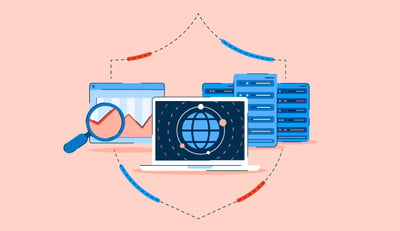August 7, 2024
 by Sagar Joshi / August 7, 2024
by Sagar Joshi / August 7, 2024

Worldwide, cybercrimes continuously evolve, with hackers constantly seeking new ways to exploit your data and money. They keep inventing new tricks, variations of distributed denial of service (DDoS) attacks, or social engineering assaults to fulfill their surreptitious motives.
Cybersecurity professionals constantly improve their techniques and technology to combat these threats. They employ several tools, such as antivirus software, DDoS protection software, and incident response solutions, to secure a company’s systems and networks against cybercrime.
The statistics below show the true state of cybercrime across the globe. Take a look to proactively set up measures to protect against cyber threats.
Cybercrimes cost victims a lot. To gain unauthorized access to systems and networks, hackers create new ways that make detection tricky. Some rely on generative AI.
There are different types of cybercrimes, such as phishing, ransomware, or malware. Some of them are common, like phishing attempts, while some might be completely new to you.
In this section, we’ll discuss various kinds of cyber attacks and how much they cost the victims.
Phishing attacks trick victims into revealing their confidential information. They often look like legitimate emails that come from a trusted source.
Ransomware locks your computer or encrypts your files. Hackers then demand a ransom before they return access to your computer or files.
Business email compromise (BEC) attacks trick employees into transferring money or sharing sensitive information. They often come in the form of an email from a boss, coworker, or partner.
Using several hijacked computers, DDoS attacks send a destabilizing amount of traffic to a website or online service in order to slow it down or crash the system. These attacks are the fifth leading cause of cyber threats.
of DDoS attacks targeted education, finance, government, and healthcare sectors in 2021.
Source: MSSP Alert
Malware infects your computer to steal information, damage files, or block access to your data.
In addition to these causes, human error proves to be a leading cause of data breach. It’s the reason for almost 74% of breaches.
Behind the numbers are real stories. Discover the biggest data breaches and how they reshaped the security landscape.
Organizations invest in modern security solutions equipped with artificial intelligence to deal with rising cybercrimes. Here are a few statistics that provide evidence for this.
Currently, we’re experiencing a shortage of skilled cybersecurity professionals worldwide, resulting in several unfilled cybersecurity positions. Take a look at the statistics to understand the state of employment in the cybersecurity sector.
Many cyber attacks have made it to the pages of history. Here are some that caused significant damage.
of global organizations will be affected by supply chain attacks as early as 2025.
Source: Forbes
Use these statistics to design measures against trending cybersecurity threats in the market – before anything bad happens. It’s better to protect rather than react to threats as they happen. See if AI can make your current systems more robust to combat the rising complexity of cybercrimes.
Even after following the best cybersecurity practices, if cybercrime knocks on your door, you need to manage the security incident and minimize its impact.
Learn more about incident response and make security incidents less chaotic.
Sagar Joshi is a former content marketing specialist at G2 in India. He is an engineer with a keen interest in data analytics and cybersecurity. He writes about topics related to them. You can find him reading books, learning a new language, or playing pool in his free time.
A domain name system (DNS) helps your computer find websites you want to visit. It does this...
 by Sagar Joshi
by Sagar Joshi
Global trade supports the economic standing of developing and established countries. It...
 by Sagar Joshi
by Sagar Joshi
Sun rays, wind, and water last forever. They won’t exhaust themselves like fossil fuels do....
 by Sagar Joshi
by Sagar Joshi
A domain name system (DNS) helps your computer find websites you want to visit. It does this...
 by Sagar Joshi
by Sagar Joshi
Global trade supports the economic standing of developing and established countries. It...
 by Sagar Joshi
by Sagar Joshi


